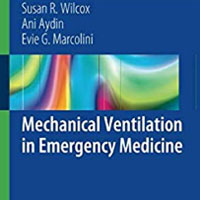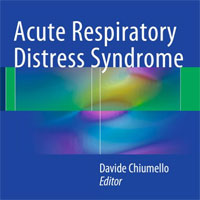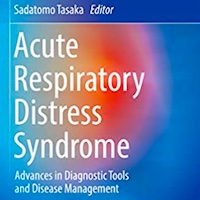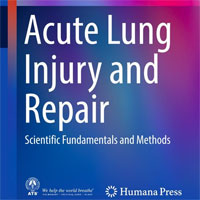Tag: ARDS
Back To The Future: ARDS Guidelines
In June 2023, Intensive Care Medicine published the European Society of Intensive Care Medicine (ESICM) practical guidelines for respiratory support in patients with acute respiratory distress syndrome (ARDS). This monumental... read more
1-year Survival Rate of COVID-19 Infected Patients with ARDS Based on Ventilator Types
The study revealed that the utilization of non-ICU sophisticated ventilators was linked to a higher mortality rate when compared to standard ICU ventilators in COVID-19 patients with ARDS. However, given the shortage and... read more
The impact of diabetes mellitus on morbidity and mortality in patients with COVID-19
During the COVID-19 pandemic, healthcare delivery was affected in various ways. For example, acute and chronic cardiovascular diseases (CVDs) and events were less frequently observed in hospitals, both because public health... read more
Fluid Therapy for Critically Ill Adults with Sepsis
Fluids are an important component of treating patients who are critically ill with sepsis. Although optimal fluid management in patients with sepsis remains uncertain, clinicians should consider the risks and benefits of... read more
Verticalization Therapy for ARDS Patients Receiving VV-ECMO
Persistent hypoxemia during veno-venous extracorporeal membrane oxygenation (VV-ECMO) for supporting acute respiratory distress syndrome (ARDS) patients is a clinical challenge for intensive care medical providers. Prone... read more
Mechanical Ventilation in Emergency Medicine
This book discusses mechanical ventilation in emergency settings, covering the management of patients from the time of intubation until transfer to the ICU. It provides an introduction to key concepts of physiology pertinent... read more

Barotrauma Rate Is 25% in ARDS Patients Receiving ECMO
Patients with acute respiratory distress syndrome (ARDS) receiving mechanical ventilation have a high risk of barotrauma, which often has poor prognosis and high mortality. Although ECMO should theoretically protect patients... read more
Acute Respiratory Distress Syndrome
This book covers all clinical aspects of acute respiratory distress syndrome (ARDS), from definition to treatment, focusing on the more recent recommendations and evidence-based medicine. The addressed topics are the... read more

Cardiovascular Subphenotypes in ARDS
Latent class analysis (LCA) of transthoracic echocardiography (TTE) parameters identified four cardiovascular subphenotypes in acute respiratory distress syndrome (ARDS) that more closely aligned with circulatory failure... read more
Acute Respiratory Distress Syndrome: Advances in Diagnostic Tools and Disease Management
Divided into thirteen chapters, this book provides a wealth of research-oriented findings and practical guidance, ranging from the definition, epidemiology and pathophysiology, to the diagnosis and management of the disease.... read more

Emergency Department Crowding Impact on Lung Protective Ventilation
Obtaining definitive control of the airway, when indicated, is the responsibility of the emergency medicine physician. Traditionally patients were managed on the ventilator with lung volumes of 10 – 15 ml/kg. However,... read more
Polymorphism in Interferon Alpha/Beta Receptor Contributes to Glucocorticoid Response and Outcome of ARDS and COVID-19
The distribution of this SNP within clinical study arms may explain the contradictory results of multiple ARDS studies and outcomes in COVID-19 concerning type I IFN signaling and glucocorticoids. We found a novel disease... read more
Acute Lung Injury and Repair: Scientific Fundamentals and Methods
Acute Respiratory Distress Syndrome (ARDS) remains an important cause of morbidity and mortality worldwide, and the incidence is predicted to increase with the aging population. Several clinical disorders can initiate... read more

Heterogeneity in Pediatric ARDS: Challenges and Complexities in Diagnosis and Treatment
Pediatric intensive care physicians are well-acquainted with the concept of heterogeneity, as the patients, pathologies, and treatments they encounter can vary greatly both within the pediatric intensive care unit and within... read more
Pronation Improves Respiratory Outcomes in Neonates with Respiratory Failure
This study found that 6-hour periods of pronation (lying on the stomach) can improve gas exchange and lung function in neonates (newborn infants) with three types of respiratory failure, without causing any negative effects... read more
Time from Infiltrate on Chest Radiograph to VV ECMO in COVID-19 Affects Mortality
Venovenous extracorporeal membrane oxygenation (VV ECMO) has been used to treat severe coronavirus disease 2019 (COVID-19) acute respiratory distress syndrome; however, patient selection criteria have evolved throughout the... read more
Pros and Cons of Disconnecting the Ventilator During Acute Respiratory Decompensation
Disconnecting the ventilator and manual BMV should be performed in cases where device malfunction is the primary cause of decompensation. These instances are quite rare. Disadvantages of switching to BMV include loss of... read more
Surfactant Therapies for Pediatric ARDS
We advocate for well-designed preclinical and explanatory clinical studies to investigate the use of surfactant for pediatric (PARDS) and neonatal (NARDS) acute respiratory distress syndrome. Given the accumulating knowledge... read more
Protective Ventilation
As ventilator induced lung injury (VILI) importantly impacts outcome of mechanically ventilated patients, even in those without lung injury, it follows that those caring for the critically ill should apply protective ventilatory... read more
Prone Position in Mechanically Ventilated Patients
The use of prone position (PP) during invasive mechanical ventilation was first reported more than 45 years ago as a mean to improve oxygenation in patients with acute hypoxemic respiratory failure. Improved oxygenation... read more
Bleeding and Thrombotic Events in Patients with Severe COVID‑19 on ECMO
In a nationwide cohort of COVID‑19 patients supported by extracorporeal membrane oxygenation (ECMO), bleeding incidence was high and associated with mortality. Intracranial hemorrhage incidence was higher than reported... read more
Acquired Weakness and Hospital Functional Mobility Outcomes Following Invasive Mechanical Ventilation in Patients with COVID-19
In critically ill COVID-19 patients, the incidence of ICUAW and acute gait dependence were high. Our study identifies factors influencing both outcomes. Future studies should investigate optimal COVID-19 ARDS management and... read more









